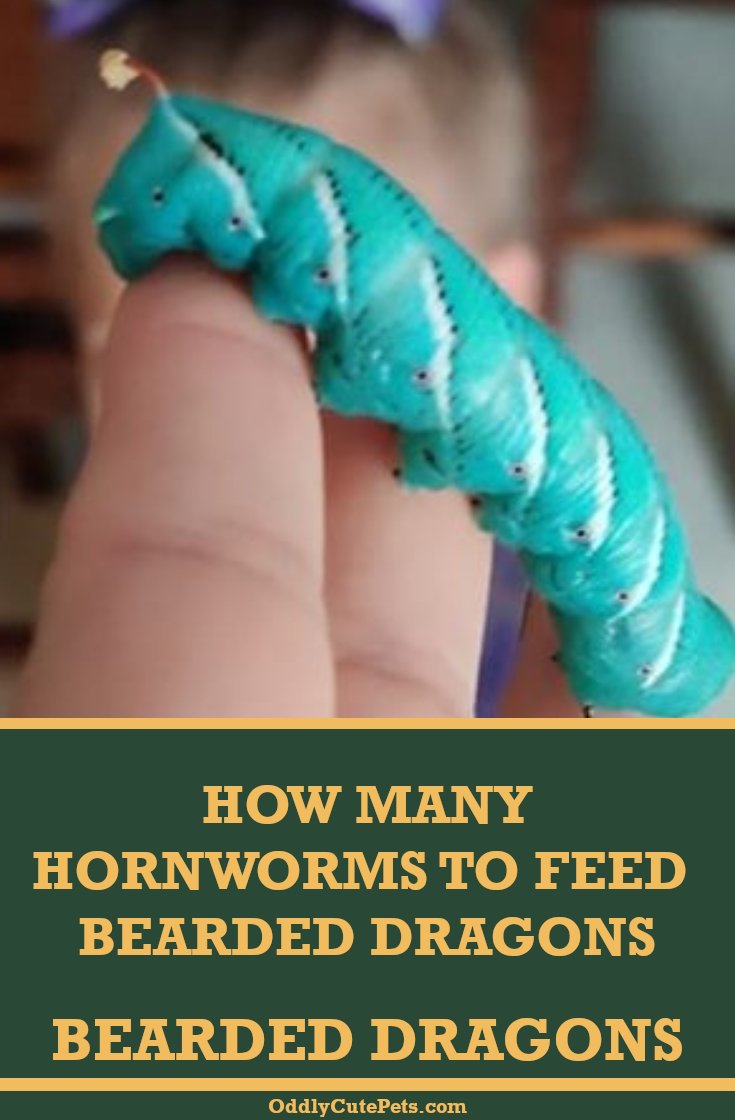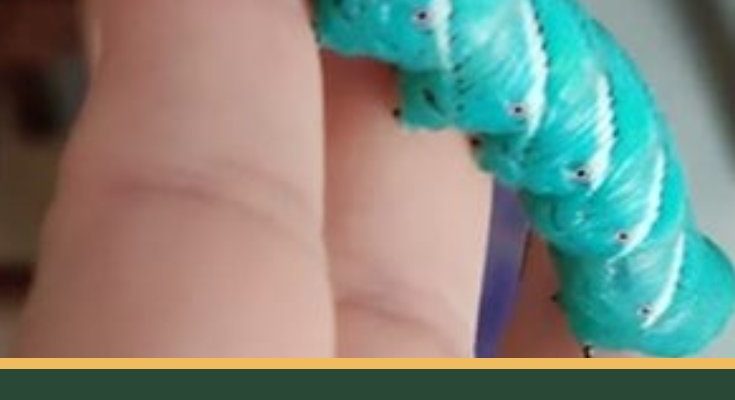
Hornworms are the larvae of hawk moths and are famous for their vibrant green color and sizable appearance. Think of them as nature’s candy for reptiles. They pack a nutritional punch, making them a popular choice for feeding a variety of reptiles, including lizards, snakes, and even some amphibians. But while they can be a great option, there are some important considerations to keep in mind. Let’s explore whether hornworms can truly enhance your reptile’s diet.
What Are Hornworms?
Hornworms are the larvae of the Five-spotted Hawk Moth. They’re usually about 3 to 4 inches long, featuring a striking green hue with diagonal lines. At first glance, they might seem a little intimidating, but trust me, they’re a lot less creepy than they sound! Their size and soft bodies make them easy for reptiles to catch and eat.
These little guys have an interesting life cycle. They start as eggs laid on tomato plants or other nightshades, then hatch into caterpillars and eventually transform into moths. Because they thrive on vegetation, hornworms are generally safe for your reptiles, as they are not known to carry any harmful toxins. Just remember, they’re biomass, and their diet can influence their nutritional value.
Speaking of nutrition, hornworms are high in **moisture** content and low in **fat**. This balance can be excellent for reptiles, especially those that need a hydrating snack. Here’s the thing, though: while they’re tasty and nutritious, they should be just one part of a well-rounded diet.
Benefits of Feeding Hornworms to Reptiles
Feeding hornworms to your reptiles can be a rewarding experience for both you and your pet. Here are some key benefits:
- High Nutritional Value: Hornworms are rich in proteins and moisture, making them an excellent source of hydration and quality nutrition.
- Palatability: Many reptiles love the taste and texture of hornworms, often going after them eagerly compared to other insects.
- Low Fat Content: If you’re worried about your reptile getting too chubby, hornworms are a lean option.
Let’s dive a little deeper. The **high protein** levels in hornworms help support growth and energy levels in reptiles, which is especially important for young or active reptiles. Plus, the moisture content can aid in hydration, especially for reptiles that might not drink water regularly.
Also, it’s pretty fun to watch your reptile chase after these squirmy snacks! It’s essential to keep your pet engaged and active, and hornworms can provide that enrichment.
How to Feed Hornworms to Your Reptiles
Feeding hornworms isn’t complicated, but there are a few steps you should follow to get it right.
1. **Choose Fresh Hornworms:** Make sure you purchase hornworms from a reputable source. You can find them at pet stores or online retailers that specialize in reptile feed.
2. **Introduce Gradually:** If your reptile hasn’t had hornworms before, introduce them slowly. Start with one or two and watch how your pet reacts.
3. **Monitor Feeding:** Keep an eye on your reptile while they eat. Some might take to them like a pro, while others might need a little coaxing.
4. **Provide a Balanced Diet:** Remember, while hornworms are a great snack, they shouldn’t be the only thing your reptile eats. Mix in other insects or greens, depending on your pet’s dietary needs.
By following these simple steps, you can safely incorporate hornworms into your reptile’s diet without any stress.
Potential Downsides and Considerations
While hornworms can be beneficial, they’re not without potential downsides. It’s essential to be aware of these considerations to ensure your reptile’s health.
**First**, hornworms are high in moisture, which may lead to diarrhea if fed too frequently. Moderation is key! It’s best to offer them as a treat rather than a staple food.
**Second**, hornworms can be relatively more expensive than other insect options like crickets or mealworms. If you have multiple reptiles, this might add up quickly.
**Third**, if your reptile has specific dietary restrictions or health issues, it’s a good idea to consult with a veterinarian before introducing hornworms into their diet. They can provide tailored advice based on your pet’s needs.
In short, while hornworms can be an exciting addition to your reptile’s menu, balance and consideration are vital.
Alternatives to Hornworms
If you’re thinking that hornworms might not be the best fit for your reptile, there are plenty of alternatives out there. Each option has its perks, so let’s take a look:
- Crickets: A popular staple, crickets are protein-rich and easy to find.
- Mealworms: They’re a little higher in fat, but they can be a tasty treat for many reptiles.
- Dubia Roaches: These are highly nutritious and have a good protein-to-fat ratio.
Each of these alternatives offers various benefits. Crickets are usually a go-to for many, thanks to their availability and cost-effectiveness. Mealworms can provide a richer flavor profile, while Dubia roaches are praised for their nutritional density. It’s all about what fits your pet’s needs and preferences.
In the end, hornworms can definitely make an exciting and nutritious treat for your reptilian buddy. They offer both hydration and high protein content, which can be great for maintaining your pet’s health. Just remember to introduce them carefully and maintain a balanced diet.
Here’s the takeaway: while hornworms are a fantastic option for many reptiles, they should complement a broader diet. Keep an eye on your pet’s response, and don’t hesitate to mix it up with other food sources to keep things interesting. Happy feeding!

